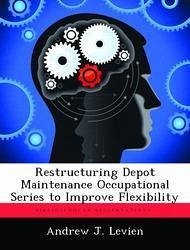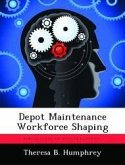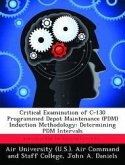This research addresses Air Force Material Command's desire to develop a flexible depot workforce to meet the demands of maintaining an ever-changing and aging aircraft fleet. Air Force depot maintenance personnel are currently (and have been for quite some time) categorized in very narrow occupational specialties, resulting in the approximately 23,000 personnel to be spread over 171 different occupational specialties. Much of the depot work maintenance workload has decreased in volume but increased in velocity, thereby demanding a more flexible workforce that can perform skills from multiple occupational specialties in support of Lean strategies for production. This study provides a comprehensive analysis into the potential strategies and ways ahead to best synchronize occupational series use in a transitional environment. This research addresses several questions: (1) what experimental and analytical models exist or can be created to determine if occupational series should be combined; (2) what series should be combined or created anew; and (3) how are series combined correctly to retain critical knowledge and promote product quality. A methodology is developed that can be applied to any production work environment to see the effects on production time as a result of cross-training.








